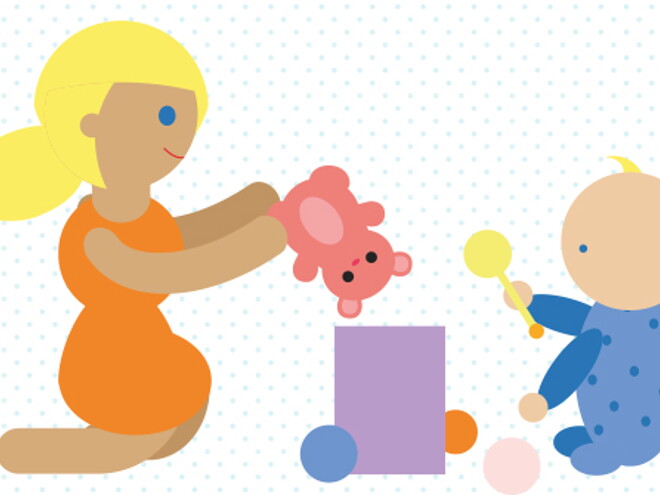
Your 6-8-month-old’s activity planner
Playing with your baby is not only fun, it also helps him develop skills to build on for an active childhood. So, switch off the television, put your cell phone away and forget about your daily chores—it’s time to interact and enjoy special time with your baby!
Every baby develops in their own unique way. Always be sure your baby has the strength and developmental skills for the activities you choose. Try these five games for starters…
- To me, to you…
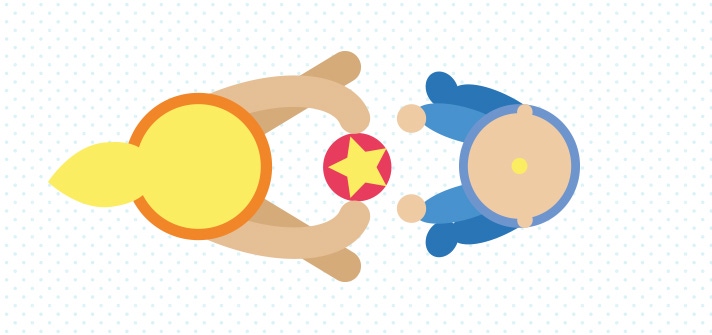
What? Rolling a ball back and forth
How? If your baby can sit without support, sit opposite him with your legs and his in a ‘V’ shape. Roll a soft ball towards him and encourage him to grab it. Once he figures out how to grab it, ask him to roll it back towards you.
Why? Practices sitting without support (a skill that many babies tend to master between seven and nine months). Also builds core strength, as well as encouraging hand-to-eye coordination.
- Clap to the beat
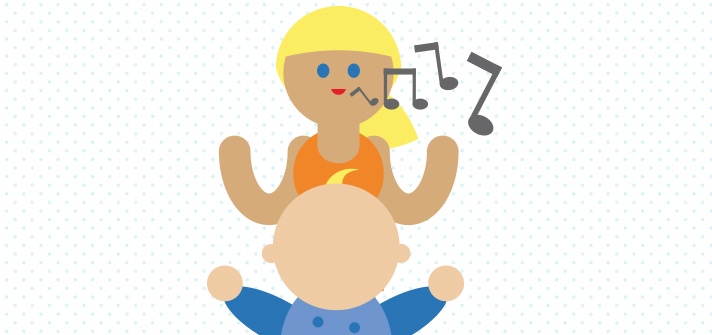
What? Classic “Pat-a-Cake” and clapping to music
How? Start by sitting directly in front of your baby (or help support him until he gets strong enough to sit by himself) and clapping your hands. If he doesn’t copy you, gently take his hands and show him how to clap. Then take his hands and clap them against your own, while singing a song with a beat. It doesn’t matter what you sing—childhood classic, modern pop music, or spontaneously made-up lyrics—long as there’s a rhythm.
Why? Helps improve coordination and babies tend to love music and rhythm. One recent scientific study showed that babies from a very young age respond physically to music and rhythmic sounds.
- Look who’s standing!
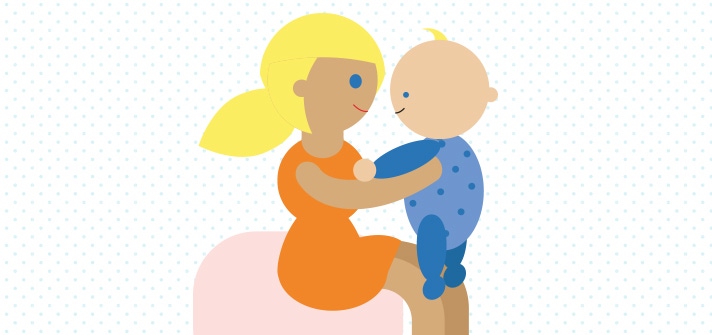
What? Bouncing your baby in a standing position
How? While you’re sitting on a chair or couch, hold your baby firmly under his arms and stand him up on your knees (supporting his head if necessary). Let him gently bounce, or squat up and down, so he can feel what it’s like to support his weight on his legs.
Why? Between seven and nine months many babies are able to bear weight through their feet when supported in standing. This helps him build leg strength for when he learns to pull up to standing and starts cruising.
- Hit the target
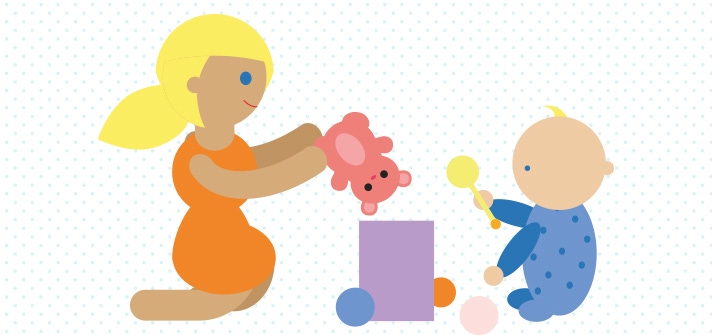
What? Throwing/putting toys into a box and then emptying them out
How? Grab an empty plastic box or bucket and place it on the floor. Sit with your little one a small distance away from it (with support for your baby if needed), with a pile of soft toys beside you both. Pick up a toy and toss it into the box, encouraging your little one to do the same. When the box is full, he’ll love taking all the toys out and starting again.
Why? Copying movements helps develop motor skills and gets your little one active. This activity also helps your baby improve his ability to reach for toys from a sitting position.
- Monkey see, monkey do

What? Copying actions
How? Lie your baby on his back and encourage him to do what you do: wave your arms, shake your head, or make funny faces. Praise him when he copies you and repeat the action back in a more exaggerated way.
Why? Can help strengthen core muscles and coordination.
Pledge to play (and pass it on!)
Are you ready for a challenge? Now that you’ve read about the importance of activity and playing with your baby, take the First 1000 Day Nutrition Program’s Pledge try to take the pledge to turn off screens and try these five games over the next five days. Make active time with your baby part of every day! When you succeed, challenge five friends to take the same pledge and each pass it on to another five friends. If that gets repeated 10 times, you’ll have challenged more than twice the entire population of Australia to spend more time playing with their babies.
Sources
https://www.healthychildren.org/English/ages-stages/baby/Pages/Developm… (Accessed December 18, 2017)
Zentner M. Eerola T. Rhythmic engagement with music in infancy. Proc Natl Acad Sci U S A 2010; 107(13); 5768-73.
AustraliaCensus2016.pdf
Last revised: November, 2017









